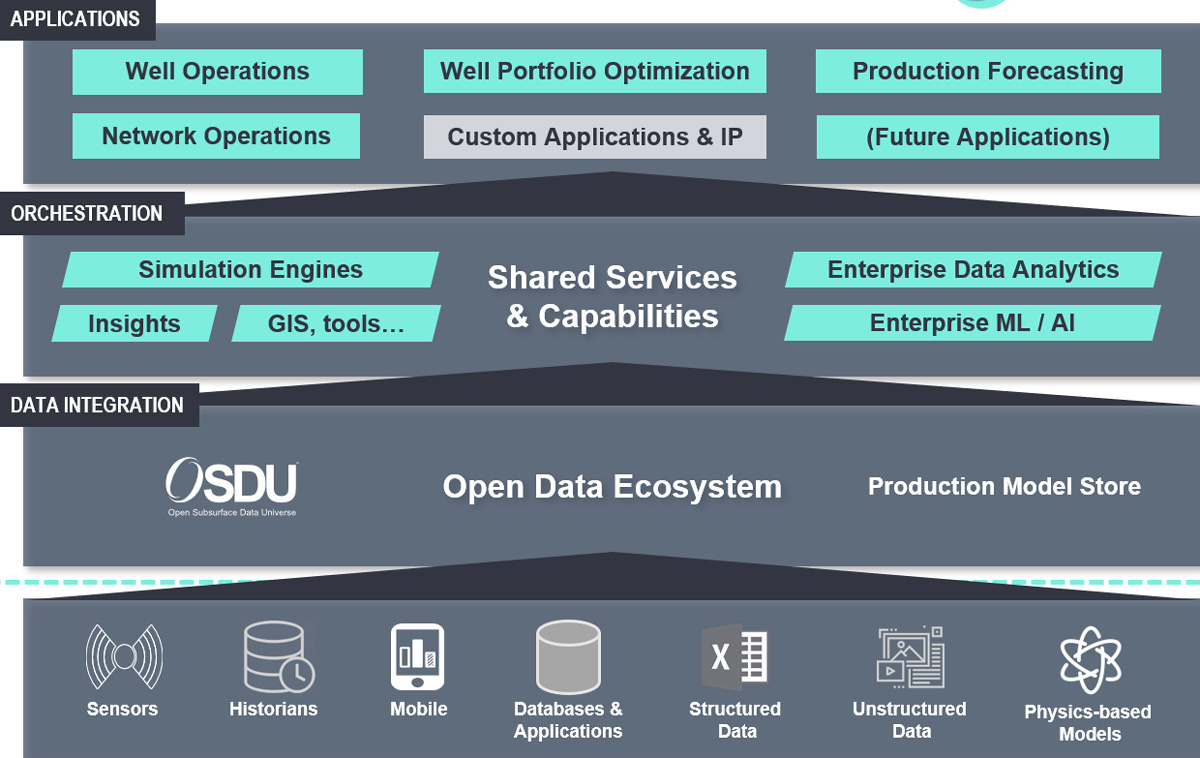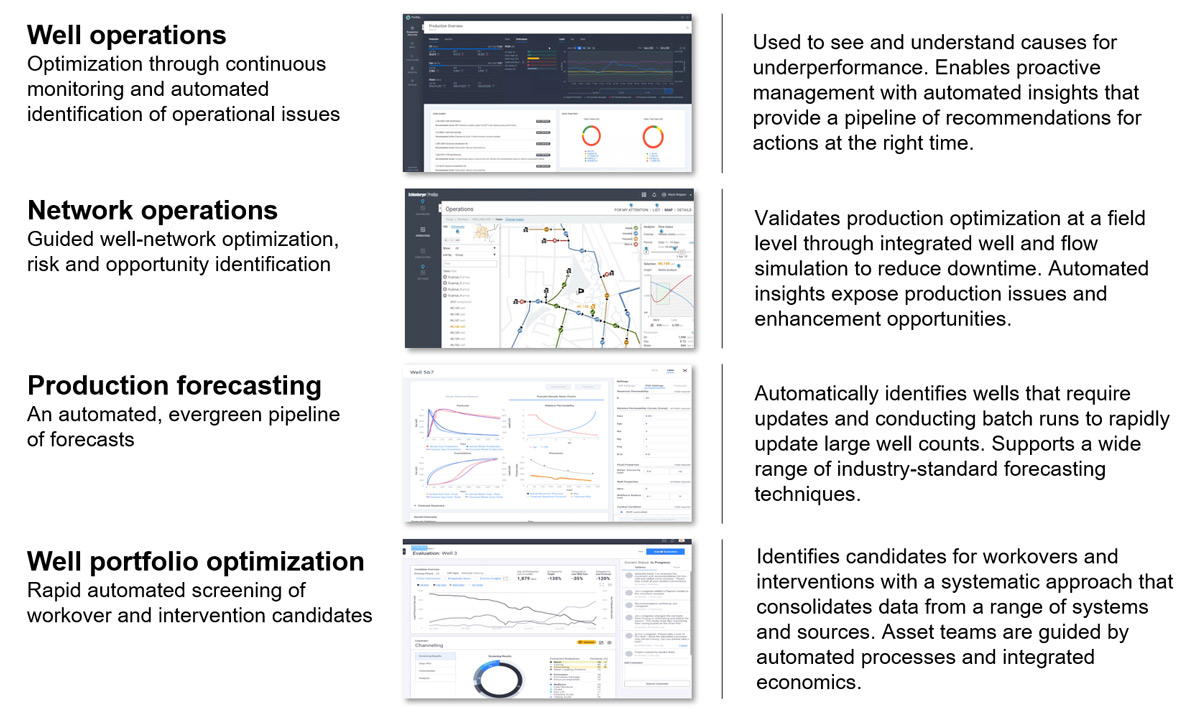
(Source: WhiteMocca/Shutterstock.com)
Presented by:
Editor's note: The full version of this article originally appeared in the February issue of E&P Plus.
Subscribe to the digital publication here.
Globally, oil and gas executives are focused on enhancing value from existing resources. This approach applies to all aspects of the industry, including human capital, physical assets and data. This is particularly important in production operations, where resource utilization drives unit cost efficiency and project economics.
Legacy software approaches are not well-equipped to manage today’s connected oil fields where single wells can generate 100,000 datapoints per day. Data management challenges arise from the sheer volume and complexity of acquired data. Asset teams spend significant resources contextualizing data to extract meaningful value, which lengthens the time from data acquisition to field actions.
Today’s oil field requires an approach that leverages cloud computing to transform production operations by streamlining data management. This empowers asset teams to concentrate on higher-value tasks and enables more agile and dynamic decision-making.
Unifying production operations via the cloud
According to market surveys, up to 70% of an engineer’s day could be spent on low-value data manipulation. Tasks such as preparing and cleansing, then duplicating data between systems for diagnostics and analysis are time-consuming, error-prone and redundant. However, production operations inefficiencies related to human capital data access can be improved with digital solutions. Even further value can be realized through improved data integrity, consistency and standardization across the production operations landscape in scalable cloud-based solutions.
The ProdOps tuned production operations system, a cloud-native tool built on the DELFI cognitive E&P environment, is designed to help operators better manage data and unify asset teams. The system provides a clear single data access point that can be utilized for confident decision-making. With automation of engineering best practices at scale, the system brings together disparate work processes to improve decision quality and accelerate time to decision or action. The system provides continuous intelligence to engineers, highlighting priorities and key focus areas. As a result, operators avoid slow or poor decisions, unplanned downtime, unnecessary interventions, deferred production and more.
The outcome is production gains and cost reductions. Cloud-based solution net gains, however, are far greater than traditional approaches because decision-making is enabled by more data and faster automated insights. Insights are derived using data-driven techniques, physics-based models and hybrids, which are a combination of both. Through the system’s ability to continuously learn, value-generating insights are self-improving as data access grows. Further human capital efficiencies are achieved as engineering effort focuses not on data quality, but rather on problem solving and exploring new opportunities. The engineer is better equipped to do so with on-demand access to the latest operational data and auto-calibrated models that are enhanced by advanced data science tools and techniques for routine diagnostics.
The cloud-native system unifies production operations by driving integration, collaboration, automation and openness for asset teams. By connecting to and aggregating data and models from proprietary and third-party sources, manual data-gathering and contextualization activities are eliminated. In addition, the system serves as a single environment to review and analyze performance, to assign and track tasks, and to drive transparency and collaboration among teams.
Rapid decision support is driven by combining data and physical models, which enables standardization of automated best practices. Further, the system provides capabilities to develop algorithms, tools and applications that leverage integrated machine learning, artificial intelligence and physics-based models to develop standardized best practices. As an open data infrastructure, operators can connect to these best practices from virtually any source.

Traditional digital oilfield solutions are typically bespoke, difficult and costly to maintain—and relatively hard coded in most cases. To overcome these challenges, the ProdOps system provides a means of extracting more value from preexisting infrastructure through quick and easy connections to data and models. Additionally, software updates are performed automatically, which eliminates the burden and cost associated with maintaining traditional production systems.
Built on extensive domain expertise and two decades of digital oilfield experience, the cloud-native system delivers a robust data foundation with an industry-proven data infrastructure and ingestion framework. Further, the technology brings together live, contextualized data from various structured and unstructured sources, including Internet of Things (IoT) sensors, production volumes and documents, all of which are used to derive insights.
Insights can be used to support remote operations by augmenting IoT/edge acquisition and control capabilities for equipment surveillance and the optimization of field systems. The infrastructure and data model innately understands what a well network is, in addition to understanding the operational measurements. Taking scalability a step further, open APIs allow operators to build their own solutions from the level of individual calculations and algorithms to extensive tools and applications.
Production applications
The cloud-based tuned production operations system contains various production-focused applications. The well operations application is used by engineers to see and understand causes for underperformance. The network operations application, which incorporates integrated well and flow simulation, validates production optimization at a field level and reduces the likelihood of downtime.
One operator is utilizing ProdOps as their long-term digital system to manage more than 6,000 wells. The operator is utilizing the system to aggregate enterprise-wide production data to digitalize and automate production surveillance as well as to optimize artificial lift performance and surveillance. The system was selected on the basis of the customer’s drive for operational and organizational efficiency—specifically around achieving goals of significant production increases and decreases in intervention spend.
The production forecasting application provides evergreen well forecasts. One operator is utilizing the application to generate, maintain and streamline the sharing of forecasts, resulting in a reduction of its forecasting process from six months to less than three weeks for more than 2,000 wells.
The well portfolio optimization application helps operators identify production enhancement candidates, which is typically a manual-intensive and repetitive process. The application flags a ranked list of opportunities for idle well reactivation and identifies opportunities for artificial lift optimization, behind-casing opportunities and more.
In one application, an operator significantly reduced the time it spent to perform and review well candidates, with 89% time savings compared with the previous manual approach. The time reduction and the elimination of routine work activities resulted in cost savings of 88%.

Cloud-enhanced production
As the industry seeks opportunities to minimize expenditure and extract the most value from existing assets, cloud-based production systems provide an integral solution for increasing production and enhancing operational and organizational efficiency. The cloud-native ProdOpssystem serves as a vehicle for digitalization with a unified environment that brings clarity to complex, scattered and disconnected operational data and processes to establish a single source of truth.
Recommended Reading
Report: Freeport LNG Hits Sixth Day of Dwindling Gas Consumption
2024-04-17 - With Freeport LNG operating at a fraction of its full capacity, natural gas futures have fallen following a short rally the week before.
Permian NatGas Hits 15-month Low as Negative Prices Linger
2024-04-16 - Prices at the Waha Hub in West Texas closed at negative $2.99/MMBtu on April 15, its lowest since December 2022.
BP Starts Oil Production at New Offshore Platform in Azerbaijan
2024-04-16 - Azeri Central East offshore platform is the seventh oil platform installed in the Azeri-Chirag-Gunashli field in the Caspian Sea.
US Could Release More SPR Oil to Keep Gas Prices Low, Senior White House Adviser Says
2024-04-16 - White House senior adviser John Podesta stopped short of saying there would be a release from the Strategic Petroleum Reserve any time soon at an industry conference on April 16.
Core Scientific to Expand its Texas Bitcoin Mining Center
2024-04-16 - Core Scientific said its Denton, Texas, data center currently operates 125 megawatts of bitcoin mining with total contracted power of approximately 300 MW.



